Editor's Note: In an excerpt from his new book, Salt Sugar Fat, Pulitzer Prize-winning journalist Michael Moss tells us the truth behind soda's secret formula -- what makes it irresistible to us, despite our best intentions. Here, he describes the company's biochemical innovations as relayed by Jeffrey Dunn, former chief operating officer of Coca-Cola North America.
As Dunn would learn, what makes Coke's formula so addictive goes beyond sugar or any secret flavorings. The precise nature of this allure was not even known to Coke until the late 1990s, when Charlie Frenette, the man who had hired Dunn and was now the chief marketing officer, decided to dig deeper into Coke's formula. With the utter secrecy that shields all matters relating to Coke's recipe, he hired a famous Swiss manufacturer of flavors and fragrances, Givaudan, to divine the fundamental aspects of Coke's appeal. Reporting back to Frenette, Givaudan pointed out that the bubbles in the soda themselves are quite enticing, which a sip of flat Coke will demonstrate. But Givaudan found something else as well, and it stems from a quirk of our biology -- one that the entire processed food industry has, of course, learned to exploit. Its premise is this: We like foods that have an identifiable strong flavor, but we tire of them very quickly.
So, for instance, meat eaters will give out on a plate of highly seasoned turkey tetrazzini much faster than they will on a serving of plain hamburger of the same size, even though the first bites of the turkey will be more exciting. Even more problematic for food manufacturers, those same meat eaters are likely to remember this the next time they go shopping and buy the plain hamburger more often. Food scientists speculate that this behavior stems from our instinctual need for varied nutrients, which are more easily attained by eating a variety of foods. Get too much of one thing, and the brain starts sending out signals of satiety, or fullness, to compel us to move on to different foods.
This was the phenomenon known as "sensory-specific satiety," or the power of one overwhelming flavor to trigger the feeling of fullness, which would complicate the efforts of food scientists like Howard Moskowitz to hit the perfect bliss point for sugary foods and drinks. In creating products that will sell consistently, they learned to walk a line between the extremes of an exciting first bite or sip and the utterly familiar. More than any other product, Coke had mastered this balancing act, Givaudan told the company's marketing officer. "They said what's fascinating about Coke versus the other soft drinks is that it really, truly is the most balanced," said Dunn, who was looped into the project. "When you drink it, there is no edge to it. Their analogy was a fine wine that's balanced so you drink it and you're not left with any kind of lingering edginess. I think, intuitively, the technical guys at Coke knew that all along. But from a marketing standpoint, this was the moment of 'A-ha.' "
Givaudan's findings remained locked up at Coke, since they weren't exactly the makings for a flashy ad campaign. The flavor experts from Switzerland were basically saying that Coke was so dominant because of a recipe that made it forgettable -- at least in the way the balance of flavors caused the brain to flash a continuous green light for more. To parse this out a bit, I reached out to John Hayes, a food scientist who directs the Sensory Evaluation Center at Penn State University. In evaluating the seductive powers of Coke, he drew on more than scientific expertise. In his younger days, he had been a true soda junkie, drinking six 12-ounce cans a day until, realizing that "that was not good for me in a whole host of ways," he cut back. Reformed as he was, I could still hear excitement in Hayes's voice as he spoke about Coke. "From an anatomical sense, we always mention smell and taste," he said. "But in terms of flavor, there is that third leg of the stool that everyone forgets about, and that is the somatosensory, or the touch component, and this includes things like the tingle from carbon dioxide bubbles, or the bite from chili peppers, or the creaminess. In the case of Coca-Cola, what's so interesting about it is you're really activating all those modalities. You have those nice aromas from the vanilla and the citrus and the whole family of brown spices, like cinnamon and nutmeg. Then you have that sweetness. And there's the bite of phosphoric acid, the tingle of the carbon dioxide. You really end up stimulating all the different parts of the flavor construct that we experience."
Still, as good as Coke is -- with a world-class formula of incredible power -- it became clear to Dunn in his years at Coca-Cola that there was more than sensory power behind the soaring sales. Coke's allure, he realized, is derived as much from what goes onto the can or bottle as from what goes into it. This is the logo, the brand known as Coke. "Everybody asks, why couldn't you just match Coke by finding out what's in it," Dunn said, holding up an imaginary can as he spoke. "But once you take the trademark off, it's a different brand." Studies have found that people like Coke much better when they know what they are drinking is in fact Coke and not one of the knockoff colas sold by grocery chains.
For more by Michael Moss, click here.
For more on diet and nutrition, click here.